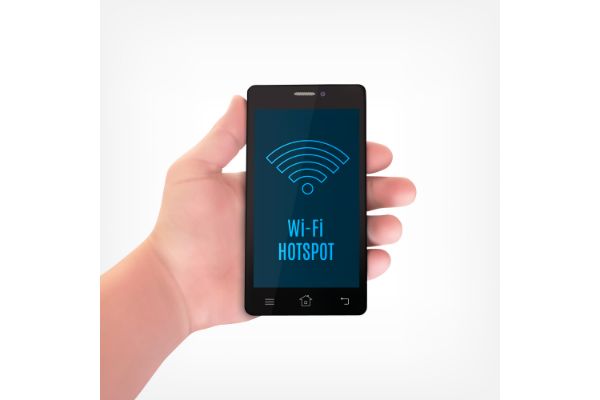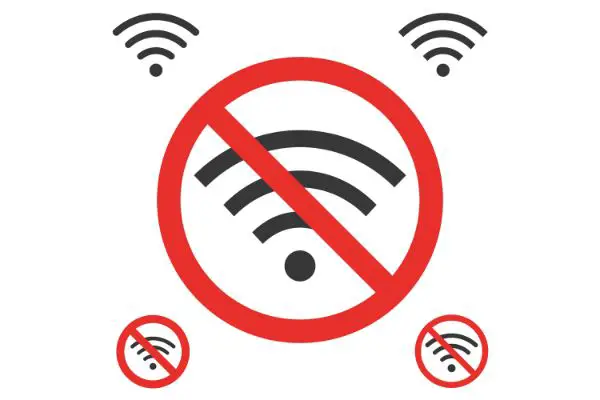Disclaimer: This post may contain affiliate links, meaning we get a small commission if you make a purchase through our links, at no cost to you. For more information, please visit our Disclaimer Page.
When it first hit the technology scene, the internet was a relatively slow place that required some very specific technology and steps in order to get a user online. If one did not have access to particular wired connections, there would be no internet access available.
Today, we now have wireless connections that allow people to connect to the web through various devices, and no physical connection is necessary. In fact, there are several ways that we can connect to wireless networks in our areas. Although a standard Wi-Fi connection is perhaps the most common one for homes, offices, or public-facing businesses that provide internet access to customers, the personal hotspot is another method.
Personal hotspots are another similar way that you can get your devices on the internet, and we will cover how they work in greater detail in our sections below.
We will go over which kinds of data they can use, whether they might be able to work without cell service at all, speak on particular devices that might be able to use a hotspot feature, and touch on how hotspots might interact with various Wi-Fi services.
Table of Contents
How Does a Personal Hotspot Work?
Sometimes called just a mobile hotspot, a personal hotspot can connect to a network and allow you to have internet access for other devices in your repertoire. You can think of it as a sort of intermediary that lets some of your devices have internet access in places where it can’t connect to any open Wi-Fi networks.
Furthermore, some of the devices you already have can act as mobile hotspots. However, you should also know that you can purchase dedicated personal hotspot devices.
These units are designed solely to have a way for all your other technology to access the internet when you are on the go, and they may have other features you can enjoy, too.
With most devices, you’ll connect to the internet via Wi-Fi. You can do so in your home or a business by using a router. The router accepts a signal from an internet service provider, and it will send that signal out to allow several devices to connect to the internet at once.
Your home router should support enough devices for a family, and business routers may support even more than that in order to accommodate a large customer base.
You can think of a personal or mobile hotspot as your router away from home. The standard router is a bridge between your internet signal from the ISP and any of the devices you want to connect to it. Similarly, the personal hotspot is what you’ll use to bridge this gap when a more traditional means of accessing the internet is not available to you.
The dedicated device is a sort of portable router that works with your phone, but you can also turn many smartphones into hotspots as well. This can be particularly useful for devices that may not come with cellular data of their own, even when they’re out of Wi-Fi range.
For example, some tablets on the market are capable of Wi-Fi, but they do not come with cellular data packages. These models usually have upgraded versions that do use such data, but having your own hotspot may be a good idea for a workaround.
There are three main types of hotspots that you can find on the market. Each one performs similar functions, but they may do so in their own ways. The common smartphone with hotspot access is one of the most ubiquitous versions of this. Most modern smartphones should support hotspot capabilities.
However, some niche providers may restrict models that they offer as part of your phone plan, and these devices may not be able to activate themselves as a hotspot.
If you do have a phone that doesn’t allow for hotspot activation, you can go for a dongle that is meant to provide you with the same functionality. As you might guess from the name, these are not standalone devices.
You’ll need to plug the dongle into an appropriate USB slot on your laptop in order to get it to work. Further, the dongle needs a credited and in-service SIM card in order to give the computer the access that it needs.
However, dongles are great for cutting out bridging that you don’t need, and you should be able to connect the computer directly to a cellular network. In this way, there is no need to pass data through a routing device first.
The only other thing to remember with dongles is that there are two types of them for internet access. Some of them only provide access to the host device, which is usually going to be your laptop. Others will have hotspot tech that allows the computer to reach out and share data with other devices.
Finally, you can do with a device that is made specifically to handle the job of being a hotspot. Most people just refer to these pieces as mobile or portable hotspots, and they represent a different form factor than either the dongle or smartphone. Like the dongle, these devices usually need a SIM card as well. However, they should have much more flexibility than their USB cousins.
A portable hotspot is something you can set and forget while you go about using your other devices as intended. Since it runs on a battery, you can take it anywhere with you, and you can change its position to get better reception. They require you to have an extra piece of tech with you, but it means that you can use your phone and other devices to the fullest.
Does Personal Hotspot Use Wi-Fi or Mobile Data?
In most cases, hotspots need to use mobile or cellular data. This is true even if your device that supports the hotspot feature is able to connect to Wi-Fi. The nature of a mobile hotspot should override the Wi-Fi connection to allow the device to use its own cellular data to support secondary things like phones or tablets that you want to get on the internet.
This is because, for most use cases of a mobile hotspot, you probably won’t have access to any Wi-Fi network at all. If you did, you would just connect the device of your choice to that.
Mobile hotspots are for situations in which you either don’t have access to any network, or the network that might be within range of your device is a private one to which you don’t have access. In either case, your hotspot still needs its own way to allow things like tablets or other technology to connect to the internet, and mobile data is this way.
There are some newer phones that may make use of a feature called Wi-Fi sharing. With this mode active, the phone in question can have Wi-Fi on to share with other devices while its hotspot is also on. However, this is not the case with most phones.
Furthermore, this feature does require an active and open Wi-Fi network in the area. Much of the content we discuss here is with the assumption that the user does not have any such network available to them.
Does an iPhone or Android Hotspot Work Without Cell Service?
Generally, your Android or iPhone devices need cell service in order to make a hotspot. The nature of the hotspot is that it can give other devices Wi-Fi access where they otherwise don’t have any other network to which they can connect.
In fact, activating a hotspot on your phone allows it to create its own Wi-Fi network where none existed before. Other devices then connect to this network in the same way that they would find and merge with any other Wi-Fi signal.
The only possible exception to this would be the newer phones we mentioned. But, again, Wi-Fi sharing needs a Wi-Fi network present and active. Otherwise, cellular data is how you make the connection.
There could also be some apps you might use with a jailbroken phone that might allow you to create hotspots in other ways. Even so, the device needs access to some type of data connection for any of this to work.
Can Apple Watch Have a Hotspot?
Currently, Apple watches only pair with iPhones. Due to the nature of the watch, it does not offer service as a hotspot. Part of this may be due to how it pairs with other devices, and another part may have to do with its battery size.
Compared to other smart units you might own or be familiar with, the Apple watch has a relatively small battery. Using it as a dedicated hotspot for other devices would probably drain this battery too quickly for it to be of use. This does not mean other iterations of the watch won’t support the feature in the future, though.
Why Does a Hotspot Turn Off Wi-Fi?
You may notice that your phone’s Wi-Fi should deactivate automatically when you activate the hotspot feature. This is normal, and it means that the device can’t use both at once.
Your phone can act as a receiver that gets an internet signal from a router, or it can be a hotspot and act as the router itself. In most cases, it cannot do both of these at the same time. Therefore, one is disabled when the other is active.
Can You Use Your iPhone or Android as a Hotspot While Connected to Wi-Fi?
You can only do this if you have a phone that supports Wi-Fi sharing while the hotspot is active. In almost all cases, your phone turns off Wi-Fi when you turn on the hotspot. Another thing you can try is to tether the phone and another device.
However, this method usually involves using Bluetooth technology to connect two or more nearby devices over radio waves. Similarly, some newer phones may have Wi-Fi tethering.
You’ll need this feature if you want to use the phone in this way. If you don’t have one of these methods available to you, the phone can either be a receiver or a client.
Conclusion
There are several ways to get on the internet these days. Phones have cellular data plans that give us connectivity through our providers from just about anywhere.
This data is the same thing that allows users to make their phone into a client that can act as a portable router to provide Wi-Fi access even in areas that don’t typically have it. There are some limitations when this mode is active, but they are usually worth the trade in order to connect to the internet.


